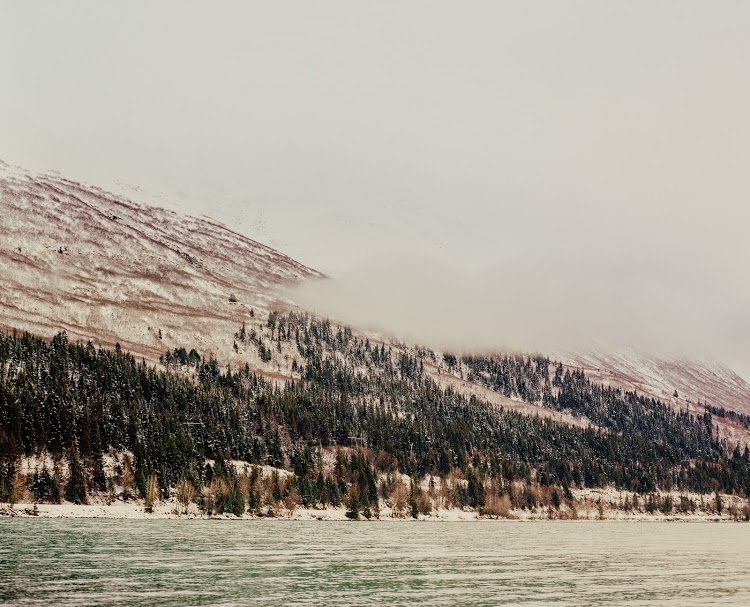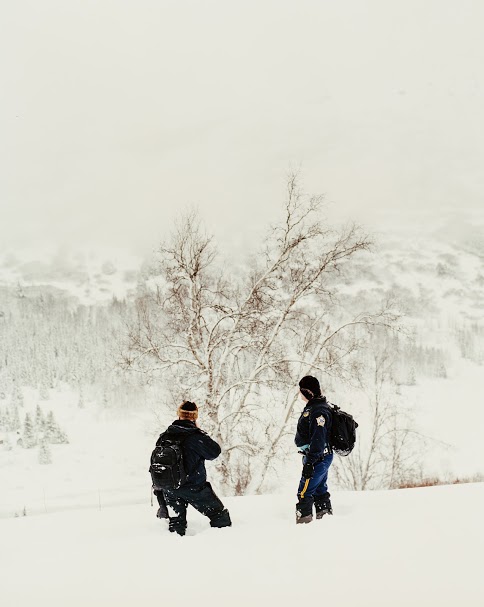
The wilderness: Alaska is full of places where a man who wants to vanish might never be found.
Every Sunday, a list of the best longform lands in my inbox. There’s a lot to read out there, and The Sunday Longread, curated by Don Van Natta Jr. and Jacob Feldman, helps narrow it down. When I skimmed the list one weekend last spring, the one marked “Jacob’s favorite” stood out. It was “In the Land of Missing Persons,” by Alex Tizon, with a note from Feldman saying he feared “spoiling the mystery.”
As someone who grew up on Nancy Drew and Sammy Keyes, I was in.
The mystery begins with Richard “Rick” Hills, an oil-rigger from Alaska who had gone missing in 2004. No one knew what happened to him, but Rick’s mother, Dolly, and sweetheart, Heidi, had never stopped looking.
Ten years after his disappearance, they finally got a clue when someone discovered unidentified human bones at Funny River in the Kenai Peninsula. But the clue takes them on a completely different path than expected – one that ultimately leads them to a family in Arizona named the Bennetts who were living with the mystery of their missing son, also named Richard. (I’m being vague because I, too, fear spoiling the mystery.)
The story, which ran in The Atlantic in April 2016, required Tizon weave multiple stories and complicated information, and he does so with seeming ease and escalating tension. He first reported about Rick Hills’ disappearance for the Los Angeles Times back in 2005, but kept up with Dolly Hills in the years that followed. How did his relationship with the Hills family progress over the course of 10 years? How did he develop a similarly close relationship with the Bennett family? And how did he piece together two storylines that are, to varying degrees, still mysteries?

When someone goes missing in Alaska, search areas can be as large as entire states in the Lower 48, and considerably more treacherous.
Tizon is not new to complexity. He worked as a reporter for the Seattle Times, where he shared a 1997 Pulitzer Prize for investigative work exposing corruption at a federally funded Native American housing project. He then worked as the Seattle bureau chief for the Los Angeles Times. He now teaches journalism at the University of Oregon and has written his first book, “Big Little Man,” a cultural criticism based on his experiences as an Asian-American man in the United States.
So, after mustering my young-reporter courage, I called Tizon and asked about how he untangled the two mysteries. Here are excerpts of our conversation.
You met Dolly Hills and Heidi for the first time in January 2005. How did your relationship evolve after the first story published? And when did you know their update was going to lead to such an incredible story?
We communicated after the [Los Angeles Times] story ran for a year or two, but we lost most contact in the intervening years. Dolly and I may have exchanged a card or email over the years, but it was nothing deep. When they emailed me in 2014, it was the first I’d heard from them in a long time. (The email was short and said, “We need to talk to you.”) The tone of the email whetted my appetite for what they had to say. My mind went all over the place. Immediately, I thought, they’ve solved the mystery of Rick Hills, but I wasn’t overly excited. If you’ve been a reporter long enough, and you’ve done something like 1,200 stories over 23 years, it’s not unusual to hear from someone you interviewed years ago with an update to the story. So, I was excited, but I didn’t know what it was going to lead to.
Did you have any idea it was going to turn into this kind of story?
I did after a few conversations with them. They were still piecing together the whole thing themselves. I could tell there was more reporting and research to do, so we just decided, “Let’s talk once a week.” For a few months, we would just fill each other in on the latest developments. After a few of those conversations, I knew there was a story to tell. I didn’t know exactly what the story was going to be, but I knew there was going to be a story worth telling. It was too emotional and bizarre to just to let it go.
Would you say this became a personal story for you?
Oh, yeah, but they all do. The stories I work on, especially for any length of time, do tend to become personal to me. What is unusual in this case is the long-standing, deep relationship that Dolly, Heidi and Leon [Bennett, Richard Bennett’s father] and I have formed, especially Dolly and Heidi. I’ve known them for a long time. I’ve seen them up and down and all these different phases. What’s unusual is this: We’re friends until the end now. That doesn’t happen with too many subjects you report on.
One of the things I found really interesting is that Alaska state troopers pointed you to Hills’ story as “typical of what state troopers dealt with almost every day,” but 11 years later, that “typical” story led you to a fascinatingly unusual story. It made me wonder: Are there a lot of other stories out there like this?
I asked the troopers that very question, and of course they said it’s rare and doesn’t happen, but my gut tells me it does. I’m not just referring to the Alaska state troopers. I’m referring to law enforcement in general. I don’t know how you’d describe it, this kind of tragic bureaucratic mishap, filing a piece of paper in the wrong place. I think that stuff happens more often than anyone would be willing to acknowledge, unfortunately. It was such a human thing. The whole story was full of human flaws and frailties.
After a few of those conversations, I knew there was a story to tell. I didn’t know exactly what the story was going to be, but I knew there was going to be a story worth telling. It was too emotional and bizarre to just to let it go.
The story isn’t finished at the end, so at what point did you decide to stop reporting and start writing?
I could’ve reported for another year or two. The Funny River Bones, which started the whole process, were discovered in June of 2014, and I didn’t want the story to be published too long after that. I felt obligated to tell the story for Dolly and Heidi and Leon before the story got stale. If we waited for five years, I don’t know if it would’ve had the impact. As it is, we already waited almost two years. That’s a long time. You just decide that some stories have a certain amount of shelf-life. You can’t hold them forever, so I set those deadlines and stuck to them, even though there might be sequels to this. It’s very possible because both cases still have huge mysteries attached to them.
A great deal of your work tackles issues of race. This piece didn’t so much, but it still contains themes of identity and injustice. Did this story feel reminiscent of the race issues you’ve covered prior?
I would say not overall, no, but there was an element of it because a lot of missing persons in Alaska are native Alaskans. Dolly Hills herself is part native. There is that great sense, not just a great sense but a reality, that Native Alaskans are underrepresented in all of the important ways in Alaska. They probably don’t get as much attention as if they were not native Alaskans. So there was an element of dealing with marginalized people, but it was a pretty minor part of the story, so I didn’t include it. It wasn’t even a theme in the story. But in a way, you can look at all of Alaska as a marginalized territory in comparison to the continental U.S. because it is this outpost, way the hell out. I know people in New York who think of Alaska as foreign as Siberia.
Jillian Deutsch is a native of northern Illinois who graduated from the Missouri Journalism School in May with a specialty in magazine writing. After a reporting internship at the Buffalo News, she moved to Paris, where she’s teaching English (to pay the bills) but is always looking for reporting and writing gigs (to maintain her sanity).

